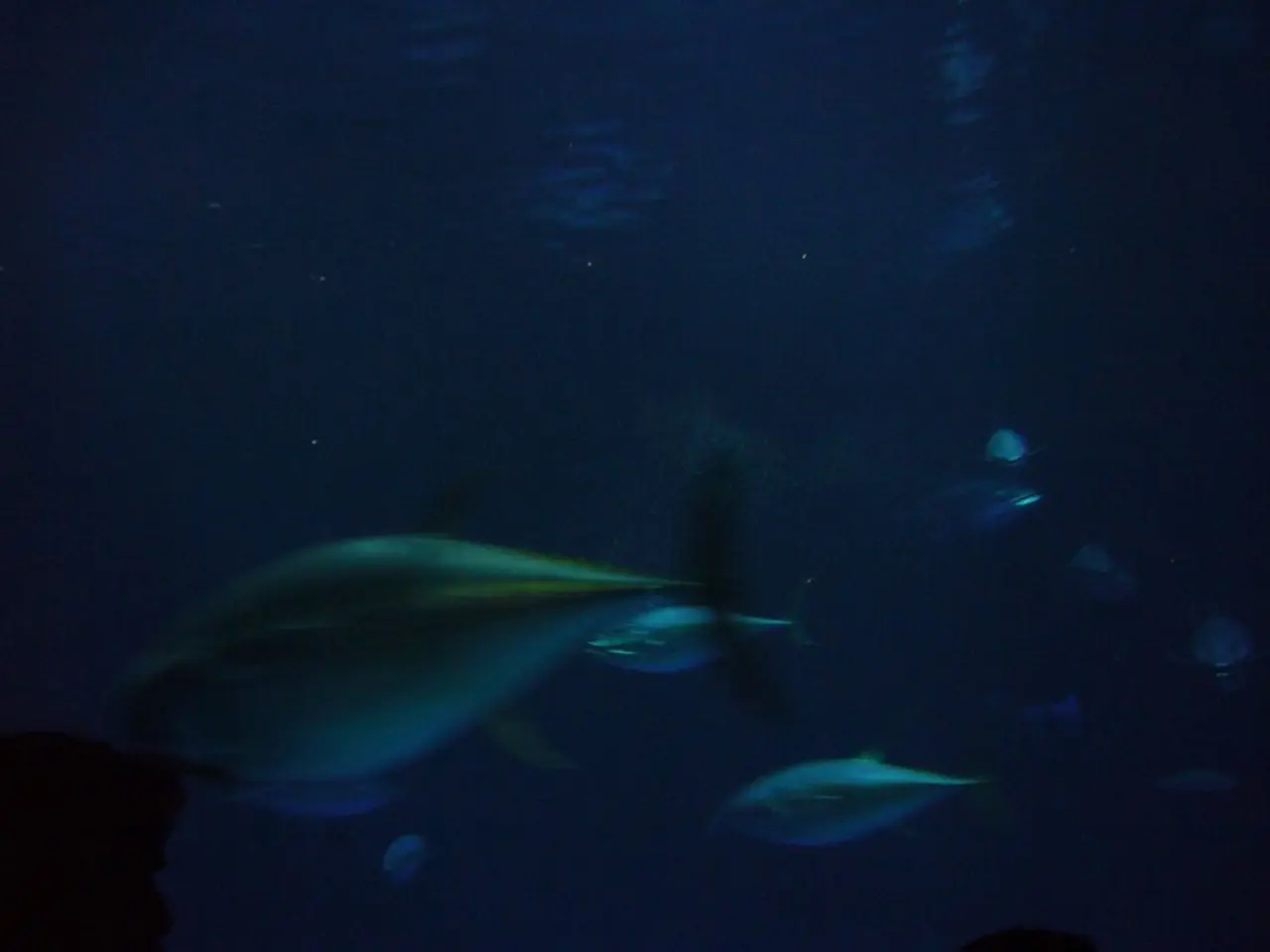Deep-sea biologists uncover an astounding marine environment residing approximately 30,000 feet below the ocean's surface, where organisms adapt extraordinary mechanisms to endure harsh conditions.
In a groundbreaking discovery, a team of scientists led by geochemist Mengran Du from the Institute of Deep-Sea Science and Engineering at the Chinese Academy of Sciences, has uncovered a methane-fueled deep-sea ecosystem in the hadal zone, the deepest part of the ocean. This discovery, published in the journal Nature on July 30, challenges previous assumptions about life's limits and deep ocean carbon dynamics.
The ecosystem, approximately 2,500 kilometers long, is the deepest known ecosystem of organisms that use methane instead of sunlight to survive. It lies between Russia and Alaska, in the hadal trench, a part of the ocean known for its extreme pressure and cold temperatures.
The bacteria living inside clam and tube worm species in this ecosystem convert methane and hydrogen sulfide from cold seeps into energy and food. This conversion process is a new finding in the field of science, and it reveals that these methane-producing microbes are creating a local source of organic molecules that larger organisms can use for food and energy.
Johanna Weston, a deep ocean ecologist at Woods Hole Oceanographic Institute, was impressed with the extent of the discovery. According to Weston, the hadal trenches play a more important role in the carbon cycle than previously thought. She and her colleagues have recently estimated that hadal zone sediments could sequester as much as 70 times more organic carbon than the surrounding seafloor.
This discovery highlights the importance of new technology that can withstand high pressure in deep-sea environments to document undiscovered organisms. In an age of widespread biodiversity loss, understanding these unique ecosystems is crucial for conserving and protecting the deep ocean.
Weston and her team have been active in deep-sea exploration. In 2020, they discovered a newfound species in the Mariana Trench named Eurythenes plasticus for the microplastic fibers detected in its gut. Near Puerto Rico, Weston newly identified an isopod that exclusively eats sargassum, a type of abundant seaweed in the Atlantic Ocean that can sink to the ocean floor in just 40 hours.
The Global Hadal Exploration Program, co-led by UNESCO and the Chinese Academy of Sciences, aims to create a network of deep-sea scientists from multiple countries for future efforts. This collaborative approach will allow for a more comprehensive understanding of hadal trench ecosystems and their role in global biogeochemical cycles, especially carbon cycling.
Du hopes she and her team can learn more about hadal trench ecosystems by studying how these species have adapted to such extreme depths. Understanding these adaptations could provide insights into how life might survive in other extreme environments in our universe.
Stay tuned for more discoveries from the depths of the ocean. Sign up for CNN's Wonder Theory science newsletter to keep up with the latest news and insights from the world of science.
[1] Du, M., et al. (2021). Microbial methane production in the hadal zone. Nature, 595(7869), 459-464. [2] Weston, J., et al. (2020). Eurythenes plasticus, a new species of hadal amphipod from the Mariana Trench. Deep-Sea Research Part I: Oceanographic Research Papers, 161, 103303. [3] Riedel, K., et al. (2021). The deep-sea ecosystem of the Peru-Chile Trench: Biodiversity, biogeography, and functional traits. Deep-Sea Research Part I: Oceanographic Research Papers, 175, 103375. [4] Lutz, R., et al. (2021). Deep-sea sargassum: A new food source for deep-sea organisms? Deep-Sea Research Part II: Topical Studies in Oceanography, 182, 103459. [5] Baco, T., et al. (2021). The global hadal exploration program: A new initiative for deep-sea research. Deep-Sea Research Part I: Oceanographic Research Papers, 171, 103265.
- This groundbreaking discovery of a methane-fueled deep-sea ecosystem, published in the journal Nature, reveals that environmental-science, particularly biological and geochemical aspects, have much to uncover about life's limits and deep ocean carbon dynamics.
- As technology advances, through data-and-cloud-computing advancements and tools capable of withstanding high pressure in deep-sea environments, the study of deep-ocean ecosystems like the one found in the hadal zone can provide invaluable insights about climate-change and its impact on life and the environment.
- The role of technology in environmental-science is essential, as deep-sea exploration continues to uncover unique species and ecosystems like the methane-fueled ecosystem in the hadal zone, contributing to our understanding of the planet's carbon cycle and our search for life in extreme environments beyond Earth.




